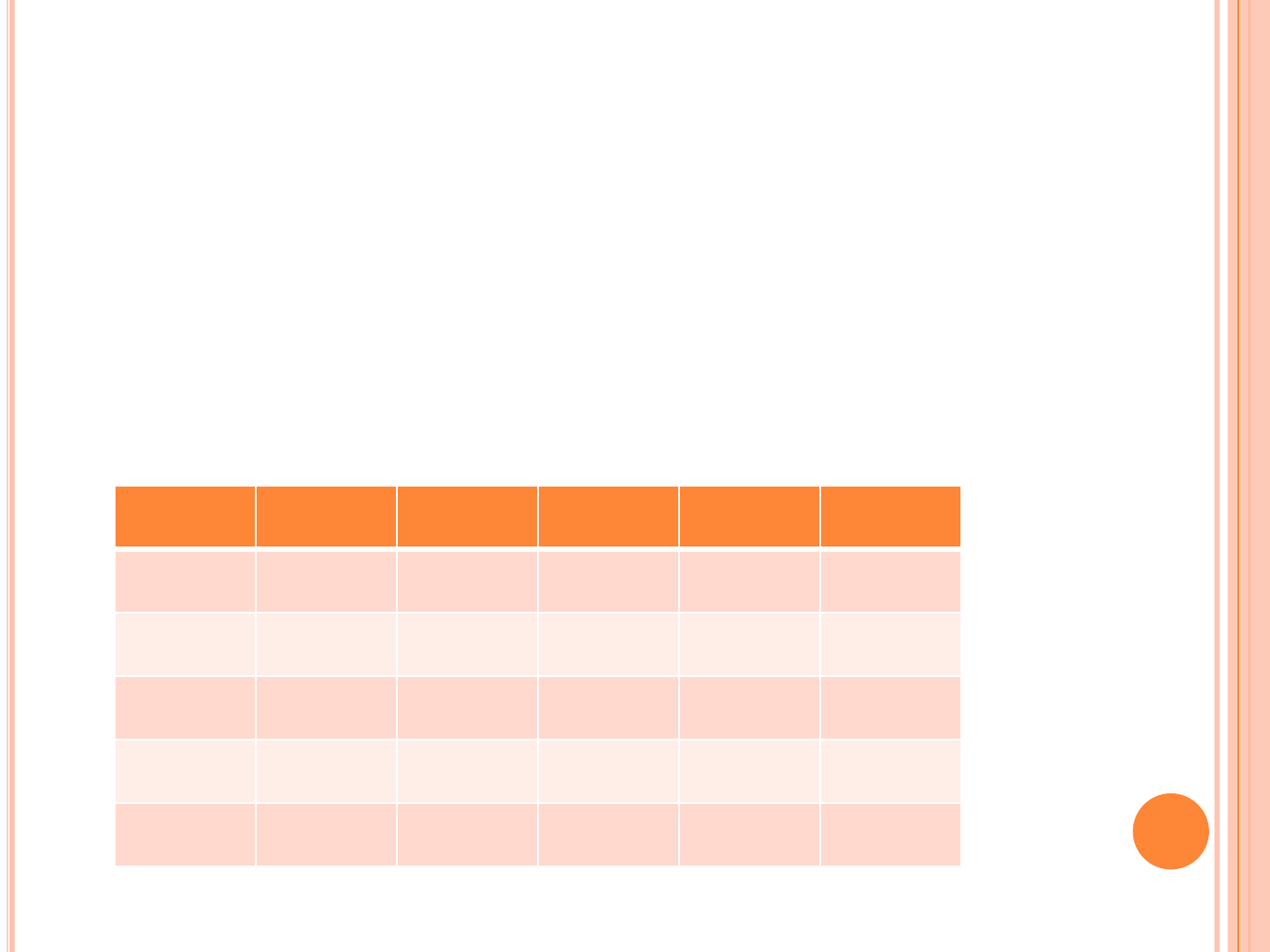
CHAPTER 5
PROBABILITY
By: Wandi Ding
1

5.1 PROBABILITY RULES
Some basic definition:
1. Probability---can be defined as the chance of an event
occurring.
2. Probability experiment---- is a chance process that
leads to well-defined results called outcomes.
3. Outcome---an outcome is the result of a single trial of a
probability experiment.
Ex: Tossing a fair coin is a experiment, if I toss once, we
call it one trial, toss twice, we call it 2 trials, and so on.
when I toss a coin once, there are two possible
outcomes: head or tail.
2

5.1 PROBABILITY RULES
4. Sample space---denoted as “s”, is the collection of all
possible outcomes.
5. Event--- an event is any collection of outcomes from a
probability experiment. An event may consist one or
more than one outcome. Usually , the event is denoted as
capital E. If one event has one outcome, sometimes
called simple events.
Ex: a probability experiment consists of rolling a single
fair die:
a) indentify the outcomes of the probability experiments.
b) determine the sample space.
c) determine the event E= roll an even number.
3

5.1 PROBABILITY RULES
Answer: a) the possible outcomes from rolling a single fair die are rolling a one={1},
rolling a two={2}, rolling a three={3}, rolling a four={4}, rolling a five={5} and
rolling a six={6}.
b) All the possible outcomes forms the sample space,
S={1,2,3,4,5,6}
c) The event E=“rolling a even number”={2, 4, 6}
Probability model: lists the possible outcomes of a probability experiment and each
outcome’s probability. A probability model must satisfy rules i) and ii).
1. Rules of probabilities:
i) the probability of any event E, P(E), must be greater than or equal to 0 and less than
or equal to 1. That is,
0≤P(E) ≤1
where P(E) means “the probability that event occurs.”
ii) the sum of the probabilities of all outcomes must equal to 1. That is, if the sample
space S={e
1
, e
2
, …, e
n
}, then:
P(e
1
)+p(e
2
)+…+p(e
n
)=1
Ex: Toss a fair coin: (probability model): p(head)+p(tail)=1
4
Outcomes
head
tail
Probability
1/2
1/2

5.1 PROBABILITY RULES
iii) if an event E is certain, then the probability of E,
p(E)=1
Ex: A single die is rolled, what is the prob. of getting a number
less than 7?
Because all the possible outcomes are less than 7, so this is a
certain event, and the prob. of getting a number less than 7 is
1.
iv) If an event E is impossible, the probability of this event is 0.
Ex: Toss a fair coin, what is the prob.of getting a head and a tail
at the same time?
Tossing a fair coin, you can only get a head or tail at one time,
you cannot get both at the same time, so this event is
impossible, and the prob. is zero.
v) If an event prob. close to zero, means this event occurs
unlikely(also called unusual event); near to 50%,means a 50-
50 chance to occur; close to 1, means this event is highly
likely to occur.
5

5.1 PROBABILITY RULES
2. Empirical approach:
The probability of an event E is approximately the number of times
event E is observed divided by the number of repetitions of the
experiment.
P(E)≈relative frequency of E=
Note: empirical approach relies on actual experience to determine the
likelihood of outcomes.
Ex: Hospital records indicated that maternity patients stayed in the
hospital for the number of days shown in the below distribution.
Calculate the probability model.(Hint: you should find out the total
trials first, it is 127)
6
in total trialsofnumber
E offrequency
Number of days
stayed
frequency probability
3 15
15/127=0.12
4 32
32/127=0.25
5 56
0.44
6 19
0.15
7 5
0.04

5.1 PROBABILITY RULES
Questions: From the probability model, would you like to tell what the
probability is for a patient staying exactly 5days, 7 days?
3. Classical method:
a) Assume all outcomes in the sample space are equally likely to
occur.
b) Equally likely outcomes means each outcome has the same
probability of occurring.
c) Formula for classical method:
P(E)=
Ex: A pair of fair dice is rolled.
a) compute the probability of rolling a seven.
b) compute the probability of rolling a two.
c) comment on the likelihood of rolling a seven versus rolling a two.
7
)(
)(
space samplein outcomes possible all ofnumber
occurcan E that outcomes ofnumber
SN
EN

5.1 PROBABILITY RULES
Key: we need to count all the possible outcomes in the
sample space and count the number of outcomes the
event can occur.
In rolling a pair fair dice, there are 36 equally likely
outcomes showing below:
8
1, 1 2,1 3,1 4,1 5,1 6,1
1,2 2,2 3,2 4,2 5,2 6,2
1,3 2,3 3,3 4,3 5,3 6,3
1,4 2,4 3,4 4,4 5,4 6,4
1,5 2,5 3,5 4,5 5,5 6,5
1,6 2,6 3,6 4,6 5,6 6,6

5.1 PROBABILITY RULES
Answer :
a) The event E=“rolling a seven”={(1,6),
(2,5),(3,4), (4,3), (5,2), (6,1)} has 6 outcomes.
So N(S)=36, and N(E), and
P(E)=N(E)/N(S)=6/36=1/6≈0.167
b) The event E=“rolling a two”={(1,1)} has one
outcome, and P(E)=N(E)/N(S)=1/36≈0.028
c) Because P(roll a seven)=6/36=1/6 and
p(roll a two)=1/36, rolling a seven is six times
as likely as rolling a two. In other words, in 36
rolls of the dice, we expect to observe about 6
sevens and only 1 two.
9

5.1 PROBABILITY RULES
Tree diagram: is a device consisting of line segments
beginning a starting point and also from the outcome
point.
Ex: find the sample space for the gender of the children if a
family has 3 children. Using B for boy and G for girl.
10
1
st
kid
B
G
2
nd
kid
2
nd
kid
B
G
3
rd
kid
3
rd
kid
3
rd
kid
3
rd
kid
B
G
B
G
B
G
B
G
B
G
BBB
BBG
BGB
BGG
GBB
GBG
GGB
GGG
The sample
space is
BBB,BBG,BGB,
BGG,GBB,GBG,
GGB and GGG.

5.1 PROBABILITY RULES
Law of large numbers:
As the numbers of trials increases, the empirical probability
is approaching classical probability.
Ex: if I toss a coin, I expect the probability of getting a
head is ½, if I toss 100 times, I will get exactly 50 times
head? Not all the time, but as the number of toss
increasing, the probability of getting a head will very
close to ½.
Law of large numbers has a large application in insurance
fields and other industries.
Subjective probability:
the probability is based on an educated guess or estimate.
Ex: I will say, 90% of students will pass this statistics
course according to my teaching experience.
11

5.2 ADDITION RULE AND COMPLEMENTS
We think about the two events when a single fair die is rolled:
First situation: getting an odd number and getting an even
number.
( This is definitely impossible to occur, it will occur either odd
number or even, but will never occur both at the same time)
Second situation: getting a number of 4 and get a even number.
(this could happen at the same time)
1. Disjoint events(mutually exclusive events):
Two events are mutually exclusive events if they cannot
occur at the same time( i.e., they have no outcomes in
common).
addition rule for mutual exclusive events:
P(A or B)=P(A)+P(B)
12

5.2 ADDITION RULE AND COMPLEMENTS
Ex: a day of the week is selected at random, find the
probability that is a weekend day.
Answer: we know only Saturday and Sunday are weekend
days.
We define the event A=Saturday; the event B=Sunday
The event A and B is mutually exclusive events, because
they cannot occur at the same time, you cannot say today
is Saturday and Sunday. So, the probability that is a
weekend day is:
P(A or B)=P(A)+P(B)=1/7+1/7=2/7
13

5.2 ADDITION RULE AND COMPLEMENTS
Ex: a single card is drawn from a deck, find the probability
it is a king or a queen.
Answer: we define the event A=getting a king, B=getting a
queen.
P(A)=4/52 P(B)=4/52
SO, P( A or B)=4/52+4/52=8/52=2/13
Note: if events A,B,C,D,… are mutually exclusive events,
then we have the formula:
P(A or B or C or D or…)=P(A)+P(B)+P(C)+P(D)+…
14

5.2 ADDITION RULE AND COMPLEMENTS
2. General addition rule ( For any two events)
P(A or B)=P(A)+P(B)-P(A and B)
If two events are mutually exclusive, then P(A and B)=0
Ex: in a hospital, there are 8 nurses and 5 physicians; 7
nurses and 3 physicians are females. If a staff person is
selected, find the probability that the subject is a nurse or
a male.
Answer: P(nurse or male)==?
first to figure out sample space shown below:
15
staff male female
total
nurse 1 7
8
physician 2 3
5
Total=13

5.2 ADDITION RULE AND COMPLEMENTS
P(nurse or male)=p(nurse)+p(male)-P(nurse and male)
=8/13+3/13-1/13
= 10/13
Ex: the probability of getting a number 4 or getting an even
number for rolling a die.
Answer: define the event A= getting a number 4
B=getting an even number
P(A or B)=P(A)+P(B)-P(A and B)
=1/6+3/6-1/6=1/2
Note: for any three events, we will have the formula:
P(A or B or C)=P(A)+P(B)+P(C)-P(A and B)-P(A and
C)-P(B and C)
16

5.2 ADDITION RULE AND COMPLEMENTS
Venn diagram to show different events:
17
P(A)
P(B)
P(S)=1
P(A
)
P(B)
P(A and B)
P(s)=1
mutually exclusive events Non-mutually exclusive events

5.2 ADDITION RULE AND COMPLEMENTS
3. Complement of an event:
Let S denote the sample space of a probability experiment
and let E denote an event. The complement of E, denoted
E
c
, is all outcomes in the sample space S that are not
outcomes in the event E.
Comments:
a) E and E
c
are mutually exclusive events.
b) P(E or E
c
)=P(E)+P(E
c
)=P(S)=1
Ex: if the probability of passing this course is 91%, what’s
the probability of failing this course?
Answer: P( passing this course)=91%, and the event of
failing the course is the complement of passing the
course, so P(failing the course)=1-91%=9%
18

5.3 INDEPENDENCE AND THE MULTIPLICATION
RULE
1. Independent events & dependent events
If event A occurs does not affect the probability of event B
occurring, the two events are independent events.
If event A occurs affect the probability of event B occurring,
the two events are dependent events.
Ex: 1) first tossing a coin, and then tossing another coin,
whether the second results will not be affected by the first
results.
independent events
Independent events vs. disjoint events:
Disjoint events means if one event occurred, then another
would not occur.
Independent events means one event occurs does not affect
the probability of another event occurs.
19

5.3 INDEPENDENCE AND THE MULTIPLICATION
RULE
Formula for independent events:
If event A and B are independent, then :
P(A and B)=P(A)*P(B)
Ex: A card is drawn from a regular deck and then put it
back; a second card is drawn. Find the probability of
getting a queen and then an ace.
answer: the event A “getting a queen in the first time” and
the event B “ getting an ace in the second time” are
independent events.
P(A)=4/52 AND P(B)=4/52
P(A and B)=P(A)*P(B)=(4/52)*(4/52)=16/2704=1/169
20

5.3 INDEPENDENCE AND THE MULTIPLICATION
RULE
Multiplication rule for n independent events:
If events A, B,C,… are independent, then
P(A and B and C and …)=P(A)*P(B)*P(C)…
Let’s go over an example on page 252.
Note: there are some terms in probability calculation such
as “at least” or “at most”
“at least” means greater than or equal to”
“at most” means less than or equal to”
Read Example 4 on page 253
21

5.4 CONDITIONAL PROBABILITY AND THE
GENERAL MULTIPLICATION RULE
1. Conditional probability:
The notation P(A│B) is read “ the probability of event A given
event B.” It is the probability of event A occurs, given that
event B has occurred.
Ex: if you roll a single fair die, what is the probability that the
die comes up 3? Now suppose that the die is rolled a second
time, but we are told the outcome will be an odd number.
What is the probability that the die comes up 3?
Ans: In the first instance, there are six possibilities in the sample
space, S={1,2,3,4,5,6}.so P(3)=1/6.
In the second instance, there are three possibilities in the sample
space, because the only possible outcomes are odd, so
S={1,3,5}, we have P(3│outcome is odd)=1/3, which is read
“ the probability of rolling a 3, given that the outcome is
odd, is one-third”.
22

5.4 CONDITIONAL PROBABILITY AND THE
GENERAL MULTIPLICATION RULE
Conditional probability rule:
If A and B are any two events, then P(A│B)=
The probability of event A occurring, given the occurrence of
event B, is found (1) by dividing the probability of A and B
by the probability of B, or (2) is found by dividing the number
of outcomes in both A and B by the number of outcomes in
B. These two methods in fact are the same.
Ex: a recent survey asked 100 people if they thought women in
the armed forces should be permitted to participate in combat,
the results of the survey are shown.
23
N(B)
B) andN(A
p(B)
B) andP(A
gender yes no total
male 32 18 50
female 8 42 50
total 40 60 100

5.4 CONDITIONAL PROBABILITY AND THE
GENERAL MULTIPLICATION RULE
Q: 1)the response is yes, given that the response was a female.
2)the respondent was a male, given that the respondent
answered no.
Ans: 1) P(yes│female)=N( yes and female)/ N(female)
=8/50=4/25
2)P(male│answer no)=N(male and answer no)/N(answer no)
=18/60=3/10
2. General multiplication rule:
the probability that two events A and B both occur is :
P( A and B)=P(A)*P(B│A) in fact, it is another form of
conditional probability.
24

5.4 CONDITIONAL PROBABILITY AND THE
GENERAL MULTIPLICATION RULE
Ex: A person owns a collection of 30 CDs, of
which 5 are country music. If 2CDs are selected
at random, find the probability that both are
country music.
Ans: we define the event A as the first selected
country CD, and B as the second selected
country CD.
P(A and B)=P(A)*P(B|A)
=(5/30)*(4/29)
=20/870
=2/87
25

5.4 CONDITIONAL PROBABILITY AND THE
GENERAL MULTIPLICATION RULE
Note:
If event A and B are independent events, then we have:
a) P( A|B)=P(A) or P(B|A)=P(B)
b) P(A and B)=P(A)*P(B)
If event A, B,C,D,…are independent events, then we
have:
P( A and B and C and D…)
=P(A)*P(B)*P(C)*P(D)…
26

5.5COUNTING TECHNIQUES
1. Fundamental counting rule:
In a sequence of n events in which the first one has K
1
Possibilities, and the second one has K
2
possibilities, and
the third one has K
3
possibilities and so forth; the total
number of possibilities of the sequence will be : (K
1
) *(K
2
)*(K
3
)…
Ex: the digits 0,1,2,3 and 4 are used in a four-digit ID card,
how many different cards are possible if repetition are
permitted?
Ans: From the counting rule, there are 5*5*5*5=625 choices.
27
5
choices
5
choices
5
choices
5
choices
If without repetition, how many possible choices?
Ans: 5*4*3*2=120

5.5 COUNTING TECHNIQUES
Factorial formulas: (for n≥0 is an integer)
1) n!=n(n-1)(n-2)…3*2*1
2) 0!=1
2. permutations:
a permutation is an arrangement of n objects in a specific
order. The arrangement of n objects in a specific order
using r objects at a time is called a permutation of n
objects taking r objects at a time. ( repetition are not
allowed). It is written as , and the formula is :
=
28
r
nP
rn
P
r)!-(n
n!

5.5 COUNTING TECHNIQUES
Ex: there are 8 persons in a small group, how many
different ways to choose 2 persons as director and
associate director, respectively?
Ans:
=(8!)/(6!)=8*7=56
2. combinations:
A selection of distinct objects without regard to order is
called a combination. (repetition are not allowed). The
number of combinations of r objects selected from n
objects is like:
29
)!28(
!8
28
p
!)!(
n!
rrn
C
rn

5.5 COUNTING TECHNIQUES
Ex: in a club, there are 7 women and 5 men, A committee
of 3 women and 2 men is to be chosen, how many
different possibilities are there?
Ans: First, we must choose 3 women from 7 women, there
are different choices;
second, we need choose 2 men from 5 men, there are
different choices.
third, by the fundamental counting rule , the total number
of different ways is =(35) (10)=350
30
35
3! 4!
7!
!3)!37(
!7
37
C
10
!2 !3
!5
!2)!25(
!5
25
C
))((
2537
CC

5.5 COUNTING TECHNIQUES
Note : there is a relation between and :
Section 5.6 give some examples about the techniques we
learned in chapter, you should read this section and
understand each question.
31
rn
C
rn
P
!r
P
C
rn
rn
